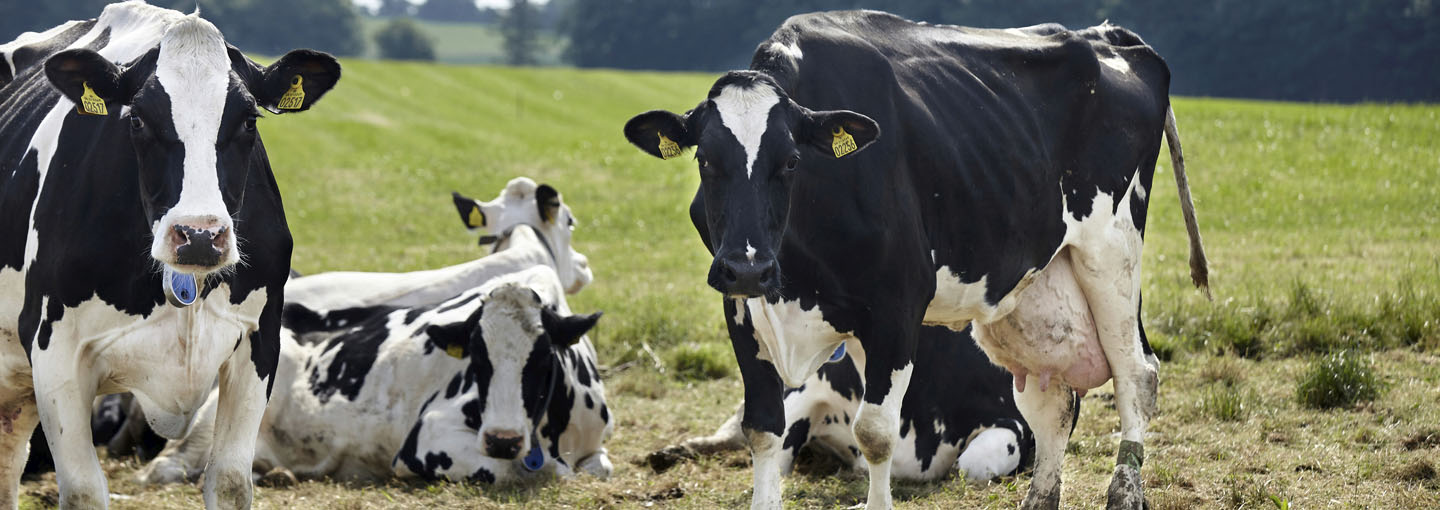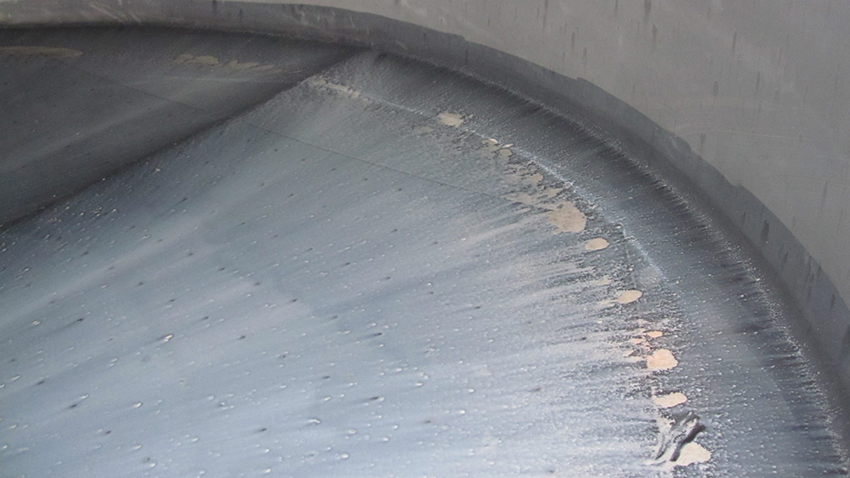
Bacteria in the milk - and what to do about an increased total bacteria count
What are bacteria? What does the total bacteria count indicate? How does it affect the milk? And how do you reduce an increased total bacteria count? Get the answers here.

What are bacteria? What does the total bacteria count indicate? How does it affect the milk? And how do you reduce an increased total bacteria count? Get the answers here.
The total bacteria count indicates the number of bacteria in the milk. It tells about the level of milking hygiene at the farm as well as the cleaning of the milking equipment and the milk cooling tank. A high total bacteria count is equal to a lot of bacteria and with it poor milk quality. It also has consequences for your quality payment bonus. The Danish Agriculture & Food Council, Cattle, aims at reducing the average total bacteria count nationally to 5,000 (CFU) 20,000 (IBC). As of January 1, 2019, the average total bacteria count is 7,600 (CFU) 30,500 (IBC). The target is established for providing consumers with the best product possible and because a high total bacteria count causes problems at the dairies with processing the milk, for instance into cheese.

Errors in the milking equipment’s wash unit or a breakdown of the hot water supply may cause an increased total bacteria count. When the milking equipment and milk cooling tank are not cleaned, milk residue remains in which bacteria can grow.
The total bacteria count indicates the number of bacteria per millilitre milk. It is one of the quality parameters by which milk is analyzed and paid for. In other words, the total bacteria count partly determines the payment which the milk producer receives for his milk.
As a rule, milk always contains bacteria. Sometimes, the bacteria originate from the cows themselves but mostly because the milk is contaminated after milking. Milk contains energy and sugar which makes for ideal conditions for bacteria growth. Therefore, a high level of hygiene and cleaning of the milking equipment is crucial to keeping the total bacteria count to a minimum.
The total bacteria count may increase acutely or slowly over time. If it increases acutely, it may be a sign of a error in the milking equipment’s wash unit or a breakdown of the hot water supply. This means that the milking equipment and the milk cooling tank are not cleaned, and milk residue remains in which bacteria can grow. It may also be a sign of the cooling system failing and thus a lack of cooling of the milk.
If the total bacteria count increases over time, it may be caused by one of the four washing parameters (temperature, time, detergent, mechanical impact) having slowly become less efficient, for example because of a wrong dosage of cleaning detergents, slow calcification of the heating element of the electrical water heater or missing water plugs in the milk pipeline.
An increasing total bacteria count is typically caused by a lack of hot water, no or a low dosage of cleaning detergents or an inadequate mechanical impact such as a lack of flow of the washing water or blocked water turbines inside the milk cooling tank.
Finally, in a few cases, an increased total bacteria count may also be caused by bacteria coming from cows with certain types of mastitis that cause an increased total bacteria count in the milk. Especially cows with group B streptococci, and occasionally uberis, may cause an increased total bacteria count in the milk.
If the milk has an increased content of bacteria when arriving at the dairy, extra energy is required to complete the pasteurization as well as shorter intervals between the cleaning of the machines and the equipment, resulting in extra costs to the dairy.
If the milk contains an extraordinarily large number of thermo resistant bacteria (heat resistant bacteria), many of them will survive the pasteurization process, thus potentially damaging the final product and maybe even spoiling the entire production. This is especially relevant for the production of cheese in which thermo resistant bacteria can affect the ripening and the taste of the finished cheese. Milk powder may also, from time to time, contain thermo resistant bacteria that might be multiplied in the final product.
If the milk has not been cooled quickly enough after the milking, the bacteria might multiply very quickly. This may cause the milk to have an unpleasant aftertaste (a burnt taste) and at worst, the milk cannot be used at the dairy.
Watch this online course about milk quality
Bacteria are often categorized into types, depending on the temperature interval in which they grow and multiply. Normally, bacteria are divided into psychrophilic, mesophilic and thermophilic bacteria.
The psychrophilic bacteria can grow at quite low temperatures. They typically appear when the milk has been exposed to a failure in the cooling system or has not been cooled fast enough, which has allowed the bacteria to grow. This means that the bacteria keep multiplying even after the milk has been cooled and is kept on a low temperature.
Mesophilic bacteria grow in temperatures up to 38-39 ºC. Like in the case of the psychrophilic bacteria, they are pretty easy to kill by pasteurization and normally do not cause any problems for the dairy.
The thermophilic bacteria – also called thermo resistant bacteria – grow better at high temperatures up to 52-53 ºC. Also, many of them can survive temperatures over 60 ºC for shorter periods of time. Therefore, these bacteria are not necessarily killed by the normal pasteurization at the dairy. In many cases this means that the quality of the final product is affected, and, in some cases, the product is completely destroyed. Especially dairies that only produce cheese bring focus to a low number of thermo resistant bacteria in the raw milk.
A high number of thermo resistant bacteria is often seen in milking equipment that lacks sufficient hot water for cleaning. Often, these bacteria can create a build-up of biofilm in pipes and on surfaces which can be very difficult to remove with a normal cleaning.
An increased total bacteria count affects the financial situation of the farm in several ways, including less income because of no quality payment bonus, but also due to increased costs as a result of poorly cleaned milking equipment, a lack of maintenance and failure of the milk cooling tank. Furthermore, this results in extra working hours in connection with boosting, extra washing and manual cleaning of the milk cooling tank.
Emneord
